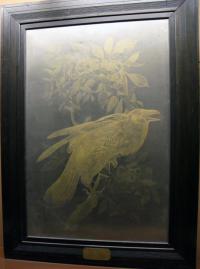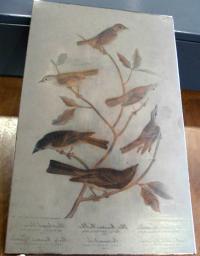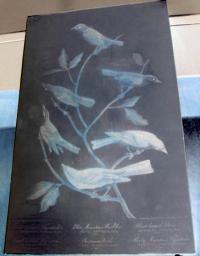According to the book The Double Elephant Folio, chapter G “The Copper Plates,” John James Audubon (1785-1851) had his engraver Robert Havell Jr. (1793-1878) prepare and ship the set of 365 copper plates for The Birds of America to the United States in 1839. Double elephant refers to the enormous plate size of 1016 x 678 mm. The plates survived a warehouse fire in 1842, about which Audubon wrote “They have indeed passed through the great fire of the 19th ulto but we are now engaged in trying to restore [them] to their wonted former existence; although a few of them will have to be reingraved for use, if ever the work is republished in its original size at all.”
After Audubon’s death, his wife took charge of the plates. An advertisement was published in 1870 offering 350 plates for sale, although no buyer was found. A 1908 article by Ruthven Deane indicates that the plates were eventually stored with William Dodge, Princeton class of 1879, who gave a number of them to the American Museum of Natural History, the Metropolitan Museum of Art, the Smithsonian Institution and Princeton University.
Happily, The Double Elephant also contains an inventory to the 78 plates that are currently known to be held in public or private collections (the rest were presumably sold for scrap). Princeton is fortunate to hold plate no.56 Red-Shouldered Hawk; no.101 Raven [above]; no.417 Maria’s, Three-toed, Phillips’s, Canadian, Harris’s, and Audubon’s Woodpeckers; no.422 Rough-legged Falcon (Rough-legged Hawk); and no.434 Little tyrant fly-catcher; Blue mountain warbler; Short-legged pewee; Small-headed fly-catcher; Bartram’s vireo; Rocky mountain fly-catcher [below].
Waldemar H. Fries, The Double Elephant Folio: the Story of Audubon’s Birds of America (Amherst, Massachusetts: Zenaida Publishing, c2006). Graphic Arts: Reference Collection (GARF), QL674.A953 F74 2006


